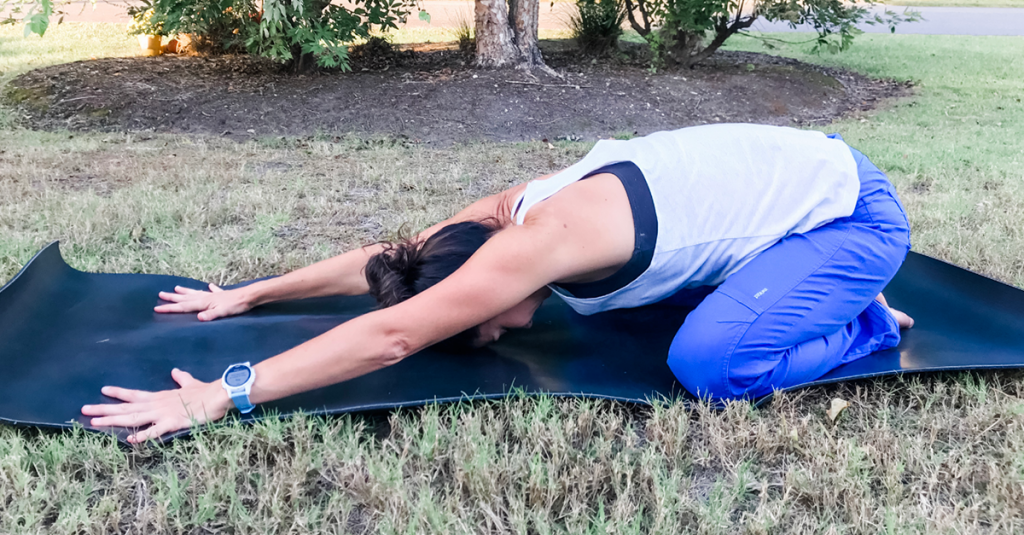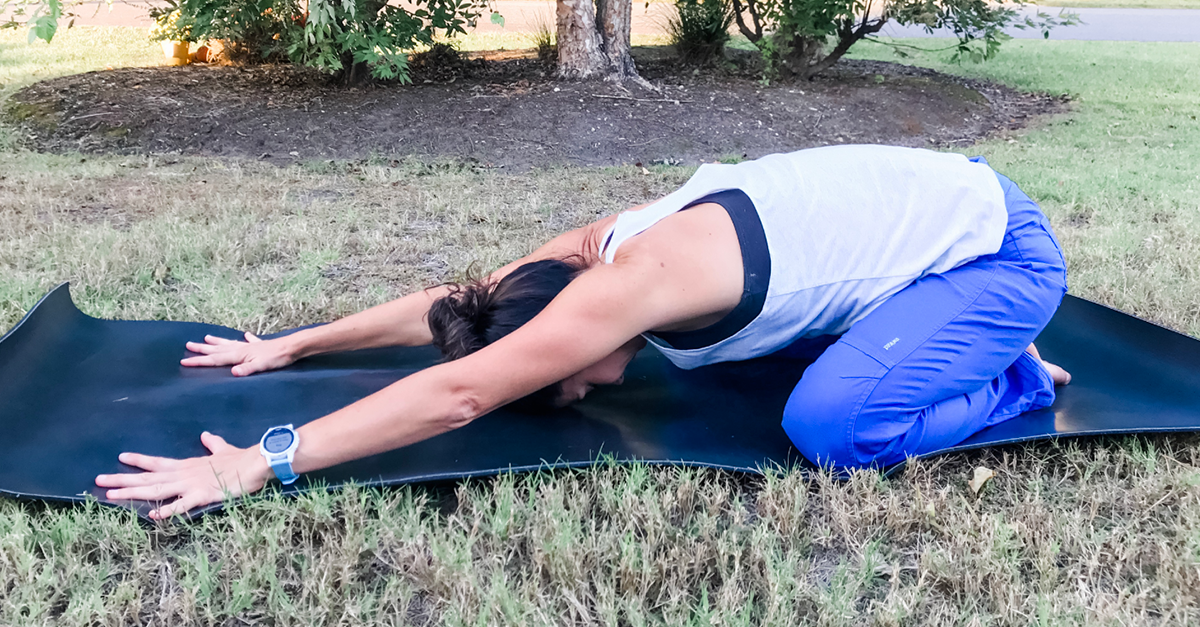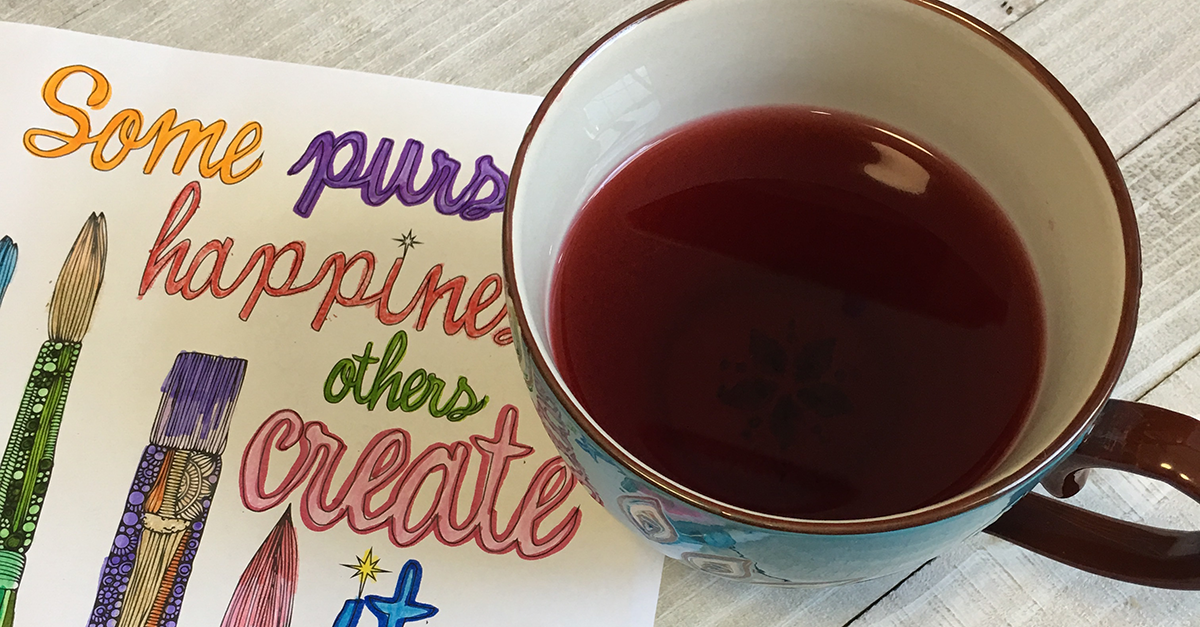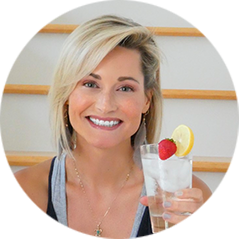Expert Advice

Acella Pharmaceuticals is partnering with Heather Procknal, NBC-HWC-CHC, to bring greater awareness to the importance of thyroid care and education. This post is part of a paid sponsorship by Acella Pharmaceuticals.
Disclaimer: The information provided is for educational purposes only and does not substitute professional medical advice. Consult a medical professional or healthcare provider before beginning any exercise, fitness, diet, or nutrition routine. Acella Pharmaceuticals does not endorse, promote or sponsor any products or brands mentioned in this article. The views expressed here are those of the author.
Stress is a part of life. There’s good stress, such as running in a race, planning a vacation or having a baby, and there’s bad stress, such as dealing with financial woes, relationship issues and work deadlines. Chronic stress can have a direct and negative impact on the mind, body and mood. This type of negative stress is known as oxidative stress, which is an imbalance of free radicals and antioxidants in your body. An overabundance of free radicals in your body can cause adverse chemical reactions, leading to oxidation and inflammation. The effects of chronic oxidative stress may exacerbate thyroid-related disease and symptoms, which makes managing your stress even more important. 1
Feeling stressed? Here are a few simple ways you can de-stress, relax and invite a sense of calm into your busy life. First up is an easy breathing technique you can do whenever you’re feeling stressed.
Yogic Breathing
Supports the strengthening of respiratory muscles, massages abdominal organs, improves lymphatic drainage, encourages circulation and, most importantly, facilitates relaxation. One study reports an improvement in antioxidant status levels and a reduction in free radicals following a yogic breathing exercise. 2
• Begin by finding a comfortable seated position. Sit up nice and tall and imagine your spine lengthening.
• Place your right hand over your belly and your left hand over your chest. Soften you gaze or close your eyes if you’d like.
• Take a nice deep slow inhalation into your belly. Feel your belly expand and rise. As you continue the inhalation, feel your ribs expand and then feel the air rise to the base of your throat.
• Pause your breath at the top for a count of 2. Then, as you exhale, relax your upper chest, feeling your ribs contract back down, and lastly, feeling your belly soften and lower.
• Each breath should flow naturally without tension.
• Imagine breathing in calm, soothing energy with each inhalation and releasing all tension and negativity with each exhalation. You can even say to yourself, “I’m breathing in peace and breathing out stress.”
• Repeat for six to 10 rounds or until you feel your body relax and the tension release from your shoulders and chest.
Destress and Refresh Yoga Sequence
Build on your Yogic Breath with this simple and gentle four-pose sequence. This may help bring your mind and body back to a natural state of calm.
Yoga has been studied and practiced in the integrative medical community for years, with many practitioners recommending yoga as an adjunctive treatment for various physical and mental ailments. One study shows the relationship between yoga and the reduction of oxidative stress levels in those with end-stage renal disease. 2 Another study that incorporated deep, slow breathing coupled with gentle stretching was promising for relieving neck pain and tension.3 All this to say, yoga can be very relaxing!
Swaying Palm Tree or Tiryaka Tadasana

This standing pose stretches your side body, massages your abdominal organs, and helps improve balance while bringing a sense of strength and calm to the mind and body.
• Begin by standing with your feet slightly wider than shoulder width.
• On an inhale, stretch your palms up towards the sky while interlocking your fingers overhead.
• Draw your shoulders down your back and away from your ears.
• Keeping your hips square and facing forward, bend to your right with an exhale.
• Then bend and lift to your left with an exhale.
• Continue to change sides and repeat this movement for a series of 10 on each side.
Standing Forward Bend or Uttanasana
This standing pose stretches your back and body, may help stimulate your liver and kidneys, and can help calm the mind. *Avoid this pose if you have high blood pressure.
• Begin by standing with your feet together, or parallel and slightly apart if needed for more balance or if you have any lower back pain or injuries.
• Bend forward from your hips with an exhale. Lengthen your torso as you come down toward the floor. Reach your palms toward the floor on either side of your feet or as far as you can comfortably reach without straining your back.
• You may keep a slight bend in your knees and hold onto your shins if this is more comfortable.
• Draw your kneecaps up and lift your sitting bones toward the sky while allowing your head to hang loosely.
• Hold this pose and take a few slow deep breaths.
• Place your hands on your hips as you lengthen your spine with an inhale and rise to an upright standing position.
Cat Cow Stretch or Marjariasana

This pose stretches your neck, shoulders and spine, massages abdominal and reproductive organs, and may help relieve stress and balance your emotions. You may want to use a yoga mat or something soft like a rolled blanket for your knees.
• Begin on all fours. Bring your wrists directly under your shoulders and your knees under your hips. Your head is in a neutral position.
• With an inhale, arch your spine while reaching your head and tailbone up toward the sky. Allow your belly to drop toward the floor (like a cow grazing in the grass).
• On an exhale, round your spine up toward the ceiling while releasing your head and tailbone toward the floor (like a cat stretching or arching it’s back).
• Repeat this movement alternating between cat and cow, allowing your body to follow your breath on an inhale and exhale.
Extended Child’s Pose or Utthita Balasana

This pose stretches your hips, spine and quads, promotes circulation to your brain, and may help calm your mind and reduce stress. You may want to use a yoga mat or something soft like a rolled blanket for your knees. *Avoid this pose if you have any knee injuries or range-of-motion limitations.
• Begin by sitting on your heels on the floor. Bring your feet together and your knees hip-width or more than hips-width.
• Bend forward with an exhale and rest your torso between your thighs. Relax your tailbone toward your feet.
• Reach your arms forward, spread your fingers and press your palms into the floor. Rest your forehead on the floor or on a block or rolled up towel if placing it on the floor creates too much strain in the neck.
• Relax into this pose and take a few slow deep breaths.
• When you are ready, slowly and gently rise back up with an inhale.
Take your time with these yoga poses and be kind to yourself to avoid injury. Feel free to make modifications, as your body will feel different day to day.
Other Relaxation Tips
No time to break out your yoga mat? Try these other stress-reducing activities.
Rosehip Tea

Here’s a tasty way to combat stress and the inflammation that comes along with it. Simply sip on a soothing cup of rosehip tea. This tart and mildly sweet tea is made from the berries of the rose plant. Beyond its delicious taste, this tea contains high amounts of vitamin C, which packs an immune boosting punch, as well as galactolipid, which has significant anti-inflammatory properties. The pain-relieving and anti-inflammatory properties of rosehip powder was demonstrated in a meta-analysis of 287 patients, with more than double reporting reduced pain scores over those who received a placebo.4 Makes you want to go brew yourself a cup right now, doesn’t it?
Coloring, Drawing, Journaling

While you’re sipping on your rosehip tea, you may want to consider the relaxation and mental release that comes from coloring, drawing, or journaling. Tap into your inner child and allow yourself to get lost in an adult coloring book. There are so many options out there for whatever you’re into, from inspirational-quote coloring books, to mandalas, to basic doodling pads. If coloring isn’t your thing, try writing down your thoughts and feelings, or do a “brain dump” to put what’s stressing you out on paper and out of your mind. The therapeutic benefits of writing were shown in a complementary and alternative medicine study, which incorporated episodic journaling. Participants reported a significant reduction of stress and anxiety.5 So, break out your pen and paper, or borrow one of your kiddos’ coloring books and have some fun!
Although complementary and alternative therapies are no substitute for your thyroid medication, some or all of these tips may help you manage stress and consequently improve your hypothyroid symptoms. Above all, remember to give yourself grace and loving kindness by practicing regular self-care.
REFERENCES: 1. Mancini A, Di Segni C, Raimondo S, Olivieri G, Silvestrini A, Meucci E, Currò D. (2016, March 8) Thyroid Hormones, Oxidative Stress, and Inflammation https://www.ncbi.nlm.nih.gov/pubmed/27051079. 2. Bhattacharya S, Pandey US, Verma NS (2002, July) Improvement in oxidative status with yogic breathing in young healthy males https://www.ncbi.nlm.nih.gov/pubmed/12613400. 3. Wongwilairat K, Buranruk O, Eungpinichpong W, Puntumetakul R, Kantharadussadee-Triamchaisri S (2018 August 22) Muscle stretching with deep and slow breathing patterns: a pilot study for therapeutic development https://www.ncbi.nlm.nih.gov/pubmed/30133419. 4. Cohen M, (2012 July) Rosehip - an evidence based herbal medicine for inflammation and arthritis https://www.ncbi.nlm.nih.gov/pubmed/22762068. 5. McPherson F, McGraw L. (2013 Sept-Oct) Treating generalized anxiety disorder using complementary and alternative medicine https://www.ncbi.nlm.nih.gov/pubmed/23981404
Note that DTE products, including NP Thyroid®, have not been reviewed by the FDA for safety or efficacy.
IMPORTANT RISK INFORMATION, INCLUDING BOXED WARNING & INDICATIONS
Important Risk Information
Drugs with thyroid hormone activity, alone or together with other therapeutic agents, have been used for the treatment of obesity. In euthyroid patients, doses within the range of daily hormonal requirements are ineffective for weight reduction. Larger doses may produce serious or even life-threatening manifestations of toxicity, particularly when given in association with sympathomimetic amines such as those used for their anorectic effects.
- NP Thyroid® is contraindicated in patients with uncorrected adrenal insufficiency, untreated thyrotoxicosis, and hypersensitivity to any component of the product.
- In the elderly and in patients with cardiovascular disease, NP Thyroid® should be used with greater caution than younger patients or those without cardiovascular disease.
- Use of NP Thyroid® in patients with diabetes mellitus or adrenal cortical insufficiency may worsen the intensity of their symptoms.
- The therapy of myxedema coma requires simultaneous administration of glucocorticoids.
- Concomitant use of NP Thyroid® with oral anticoagulants alters the sensitivity of oral anticoagulants. Prothrombin time should be closely monitored in thyroid-treated patients on oral anticoagulants.
- In infants, excessive doses of NP Thyroid® may produce craniosynostosis.
- Partial loss of hair may be experienced by children in the first few months of therapy but is usually transient.
- Adverse reactions associated with NP Thyroid® therapy are primarily those of hyperthyroidism due to therapeutic overdosage.
- Many drugs and some laboratory tests may alter the therapeutic response to NP Thyroid ®. In addition, thyroid hormones and thyroid status have varied effects on the pharmacokinetics and actions of other drugs. Administer at least 4 hours before or after drugs that are known to interfere with absorption. Evaluate the need for dose adjustments when regularly administering within one hour of certain foods that may affect absorption.
- NP Thyroid® should not be discontinued during pregnancy, and hypothyroidism diagnosed during pregnancy should be promptly treated.
Indications
NP Thyroid® (thyroid tablets, USP) is a prescription medicine that is used to treat a condition called hypothyroidism from any cause, except for cases of temporary hypothyroidism, which is usually associated with an inflammation of the thyroid (thyroiditis). It is meant to replace or supplement a hormone that is usually made by your thyroid gland.
NP Thyroid® is also used in the treatment and prevention of normal functioning thyroid goiters, such as thyroid nodules, Hashimoto’s thyroiditis, multinodular goiter, and in the management of thyroid cancer.
Revised
10/2023
You Are About To Leave This Website
By clicking continue, this link will take you to a website to which Alora Pharmaceuticals’ Policies & Terms of Use do not apply.
^Based on prescriptions filled, NP Thyroid® is the #1 Prescribed DTE in the United States. Source: IQVIA National Prescription Audit (NPA) data on file. Acella Pharmaceuticals, LLC.
